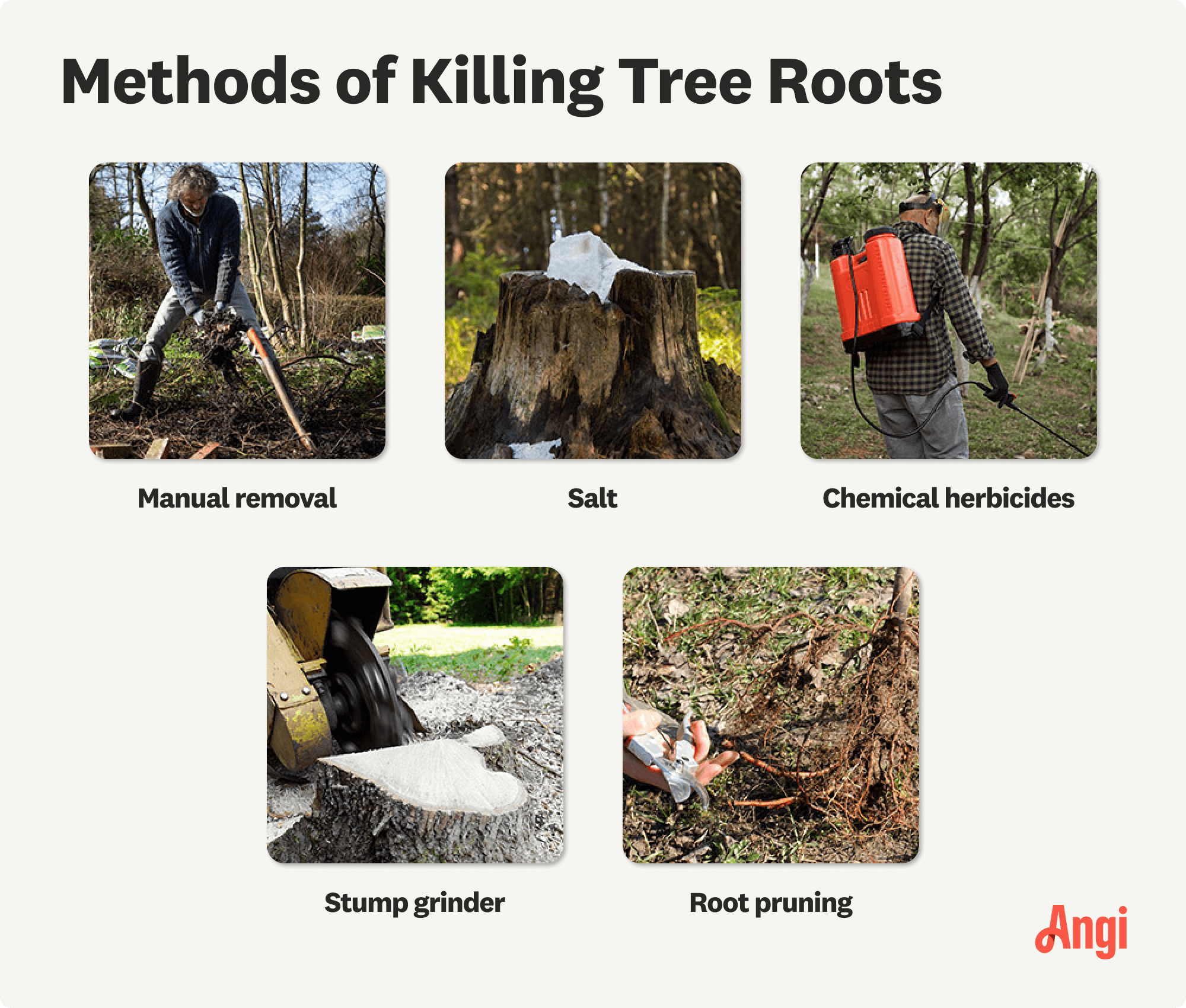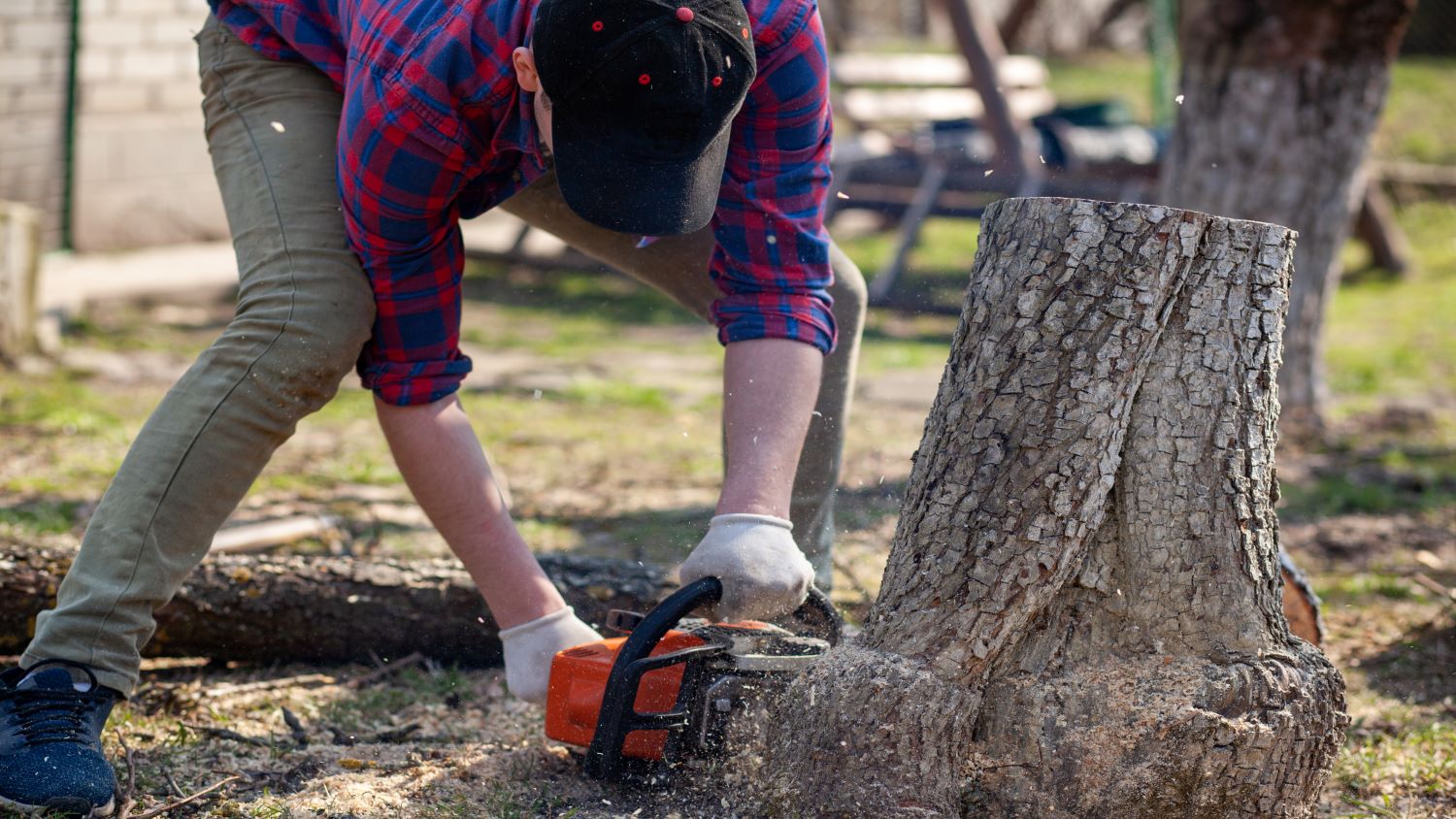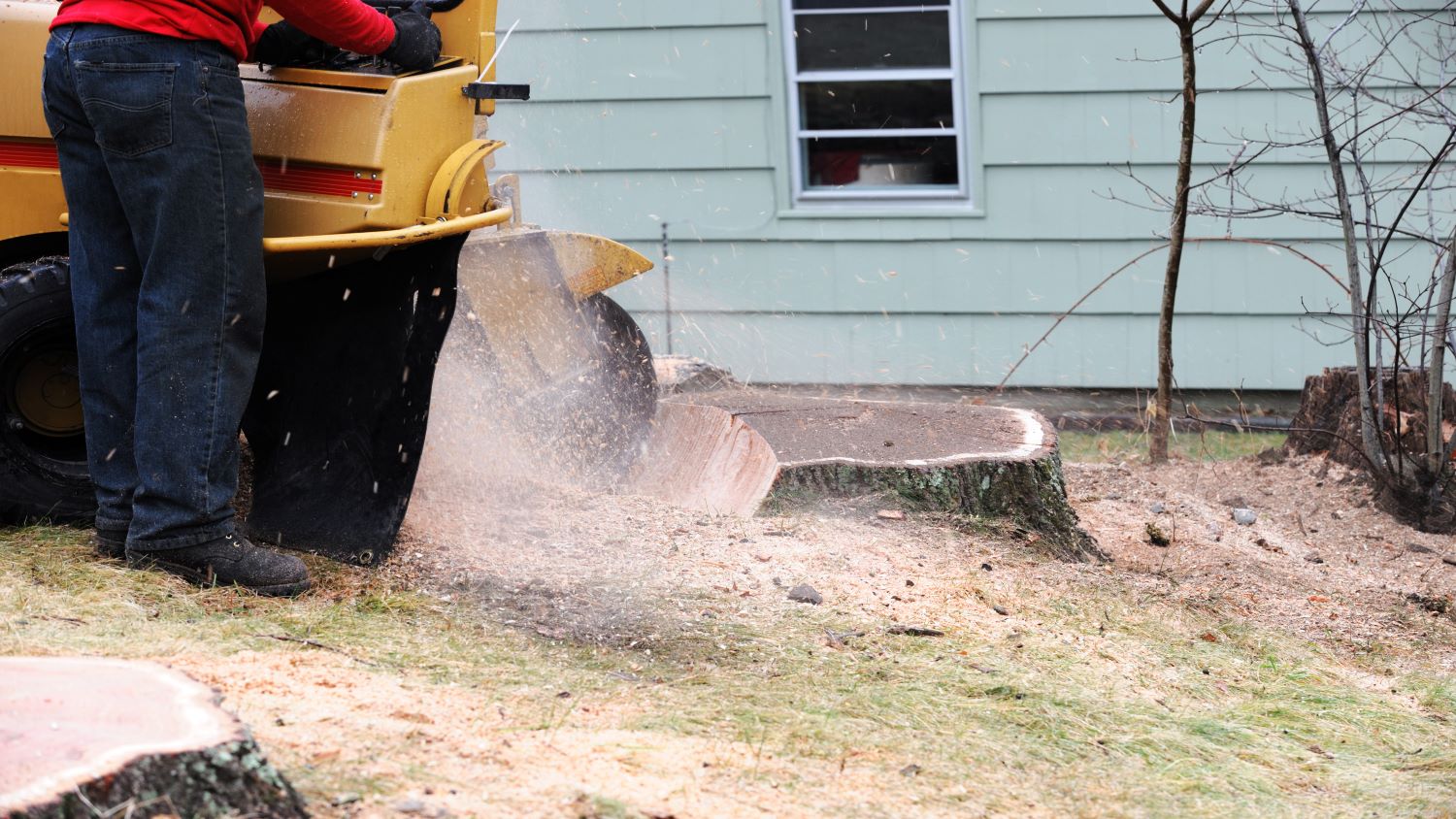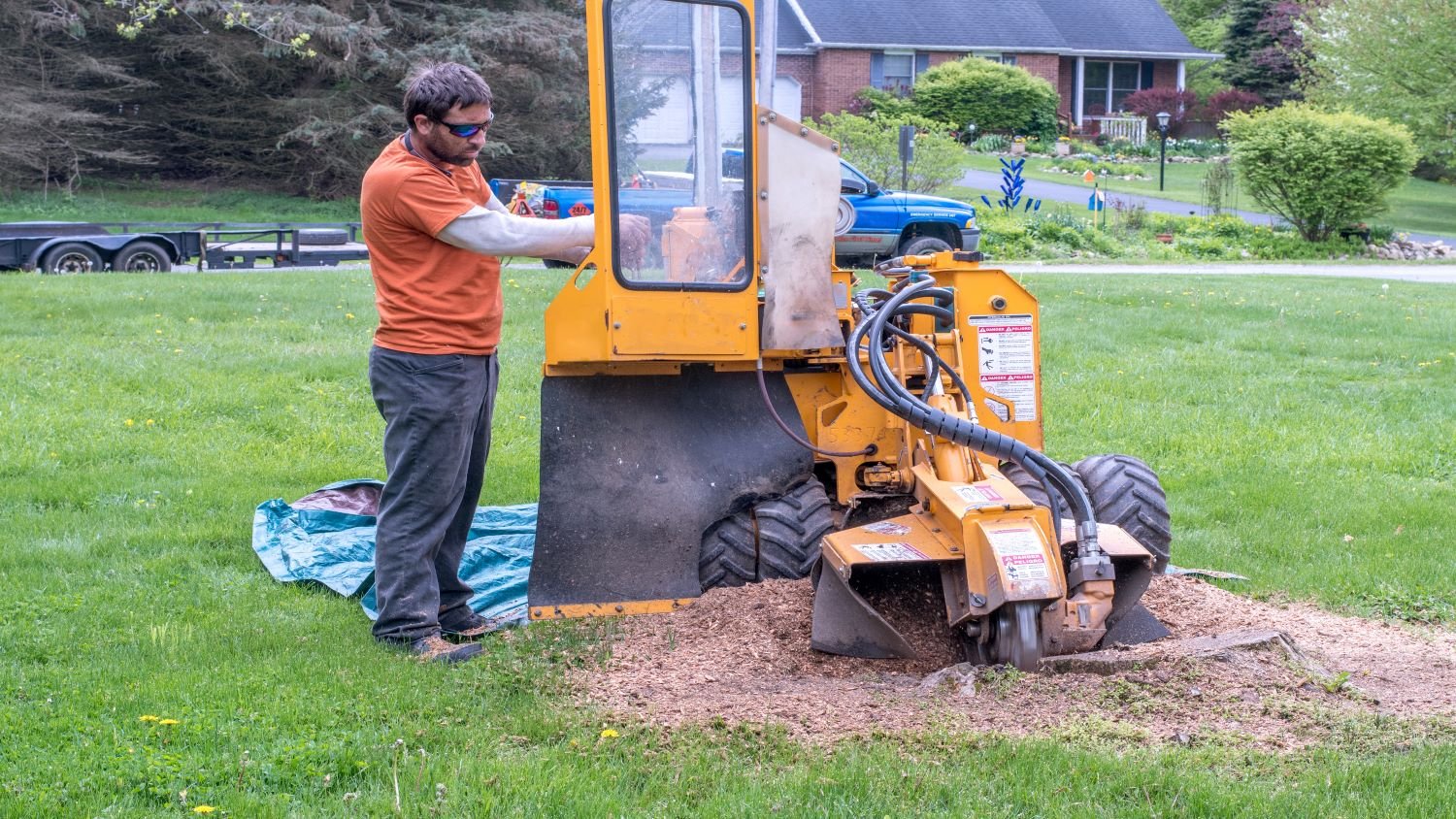
Discover what the current average tree removal cost is based on different factors to know how much it will cost to take care of a dead or troublesome tree on your property.
When tree roots are the root cause of your lawn troubles, it's time for them to go


Under your foundation, over your patio, and through your pipes—tree roots can truly wreak havoc on your lawn when left unchecked. Whether you've cut down a tree or need to know how to kill tree roots disrupting your property, it's important to work with care. Killing tree roots takes time and delicacy, but we've got the top ways to get rid of roots the right way.
Complex, high-risk projects demand more than typical DIY projects. They require time, specialized tools, and trained expertise to make sure the job is done safely and correctly. We made it easy for you to find a local pro—with our skilled network, you'll get the job done without the stress of doing it yourself or significant safety risks.

In most cases, killing tree roots will come after you've removed the tree stump. Tree stump removal is key to reclaiming that patch of land and keeping the stump from sprouting. However, even if you are only pruning the small ends of roots at the end of a tree's system, you should take several steps to prep your land before root removal.
If you haven't already, cut the tree stump as close to the roots as possible and proceed with removing the tree stump entirely.
Remove the top layer of soil and turf around the tree stump to reveal the large lateral roots.
After revealing the direction of the primary roots, map out the possible reach of the root system—again, this is between two and four times the tree's canopy from when it was still standing.
Consider whether these roots could interfere with your sewer main line, smaller pipes, sprinkler systems, or underground wiring for landscape lighting.
If you do fear that the roots interfere with these systems, it is important to call a professional tree removal service to avoid damage and to speak with your utility company to determine the best way to proceed.
Once you've removed your tree stump, it's time to move on to the roots. Fully killing large and old root systems will take several weeks or months, so plan accordingly or consider hiring a local tree maintenance professional.

If you've recently cut down a young, small tree, the root system may be easy to remove by hand and with basic garden tools. In this case, we recommend gathering:
Work gloves
Garden hoe
Root lopper
Spade
Hang saw or reciprocating saw
Here is one way to manually kill roots and remove them from your lawn:
Expose your roots from the base of the old stump by removing the surrounding soil with your spade.
Eventually, you should be able to anchor the spade delicately or hoe under the root and pry it loosely from the ground.
Pulling the root upward should expose the rest of the root, allowing you to follow it with the spade until you've revealed the smaller fibrous roots.
If you are working with larger roots, use your power saw or lopper to disconnect the larger portion of the root from the stump before you begin.
As you pull up the length of the root, move slowly to avoid significant damage to your landscape.
Rock salt, Epsom salt, and even table salt are popular chemical methods of killing tree roots and removing them with greater ease. Consider this method before removing a tree's stump, as it can take care of the whole setup at once. Here's what to do.
Using a 1-inch drill bit, drill a hole up to 6 inches into the stump or into the exposed roots.
Pack the hole with rock salt and fill the hole to the top with water.
The water will help the rock salt infiltrate the roots and speed up their death and decomposition.
Leave the area covered with a tarp and check the holes every two weeks.
Refill the hole with rock salt and water until the stump and roots visibly begin to wither.
Afterward, it will be easier to remove the large roots above ground by hand.
Chemical herbicides made with glyphosate will act similarly to rock salt as a root killer for trees. However, just like rock salt, you must be very careful with the solution to avoid killing all vegetation in the area of your tree stump, especially if it runs off with water.
Purchase a glyphosate-based herbicide strong enough for tree stumps and roots.
Suit up in appropriate protective gear, including gloves, goggles, and a work mask.
Cut the stump down to its lower point with a saw, spade, or ax, exposing the tops of the roots just above the soil.
Saturate the stump and roots with water to saturate the wood and assist with herbicide absorption.
Following your herbicide bottle's instructions, dilute the solution and cover your stump and exposed roots. Be deliberate with your application, taking care not to spread it beyond the concentrated area.
Cover the area and wait approximately two weeks for the herbicide to kill the tree roots and remaining stump.

If you learn how to use a stump grinder to remove the stump, you may be able to take out some of the large surface roots with this tool as well. You can rent a stump grinder for between $190 and $270 a day and cut out the cost of labor, which averages around $150.
Keep in mind that a stump grinder can significantly damage your lawn and any utilities below the surface when used incorrectly. Only use the grinder in the area around the stump, and only after you've confirmed that there are no pipes or wires underground.
While you must follow the instructions on your specific stump grinder, always stop grinding when you've reached between 6 and 8 inches below the ground. The rest of your roots will need to come out chemically or by hand.
Put on safety goggles, boots, and gloves to protect yourself from flying debris.
Using a chainsaw, cut the tree stump down as much as possible.
Remove any rocks and large debris from around the tree stump to avoid damaging your grinder.
Start the stump grinder and place the cutting wheel above the stump.
Lower the cutting wheel into the stump.
Carefully grind away at the stump using side-to-side and back-and-forth movements.
We always recommend working with a tree maintenance professional when attempting root pruning, or the process of cutting the roots near your tree. Removing and killing roots, even far away from your tree, can damage its health significantly. So if you want to keep your tree around, killing its roots isn’t a great idea. However, you may need to prune them if they're getting too close to your house, patio, garden, or construction site.
Here are some essential steps for removing small roots far from your tree:
Ensure that your tree is in good health before attempting to remove roots.
Only remove roots that fall outside the tree's drip line whenever possible.
If you need to remove roots within the tree's drip line, always call a professional for advice.
Avoid cutting roots larger than 3 inches in diameter.
Never remove more than 25% of a tree's root system.
Take special care of your tree after cutting its roots to ensure it heals properly.
Hiring a local tree maintenance professional to kill and remove tree roots will cost between $100 and $200 an hour. Some companies will include this in the cost to remove a tree stump, which costs $170 to $500 on average. Consult a tree removal professional and provide them with the specifics of your job (root size, type, condition) to get an accurate estimate of removal service.
Removing large roots from your landscape can cause a bit of a mess on your lawn. Here are a few landscaping tips to keep in mind during and after killing tree roots.
Never force roots from the ground with a winch or too quickly with gardening tools. Move slowly to protect both your landscape and possibility utility lines.
Remove large rocks as you dig to discover large roots.
If you plan to fill the stump and root areas with healthy turf, consider reseeding the area and amending the soil to support new grass.
Consider planting a new garden where the tree once stood, especially if you have new space from the removed stump and roots.
When planting a new tree, wait for large roots to fully decompose before starting fresh. Choose a tree native to your region and avoid tree species that tend to cause trouble, especially with tricky root systems.

Whether you can kill roots on your own will come down to the:
Size of the tree
Type of tree
Whether the roots interfere with your home or utilities
Smaller trees with short root systems can be easier to remove on your own. You will only pay for the cost of the rock salt, herbicide, garden tools, or—if you choose to go this route—the rental fee for the stump grinder. If the tree is large or near utility lines, call in the local tree maintenance professionals to handle the job.
Tree roots typically extend between two and four times the size of the tree's drip line—aka the furthest point that your tree's branches extend above ground. These roots can wrap around pipes, sprinkler systems, and underground wires. They can come above ground and become a tripping hazard or even break up the pavers on your patio.
There are two main instances when you'll need to learn how to kill tree roots:
You've recently removed a tree.
You need to prune tree roots to protect your landscape.
After removing a tree and its stump, you have the option of leaving the roots in the ground, but they could get in the way of gardening, planting new trees, utilities, and your hardscape in the meantime. Keep in mind that removing tree roots from a living tree can significantly damage its health and even kill it inadvertently.
From average costs to expert advice, get all the answers you need to get your job done.

Discover what the current average tree removal cost is based on different factors to know how much it will cost to take care of a dead or troublesome tree on your property.

Tree inspections can ensure your trees stay healthy and safe, preventing costly damage. Learn how much tree inspections cost and what can affect the price.

The cost of tree stump removal depends on size, removal method, location, and more. Our guide will show you how much stump removal costs.

Learn how to kill poison ivy on a tree using one or more of several effective methods to remove or control this noxious plant.

When pruning crepe myrtle trees, it’s crucial to be extra cautious. Learn how to prune a crepe myrtle without damaging it.

Plumb trees are great for small yards, but they require maintenance as they grow. This guide will show you how to prune a plum tree, no matter the age.